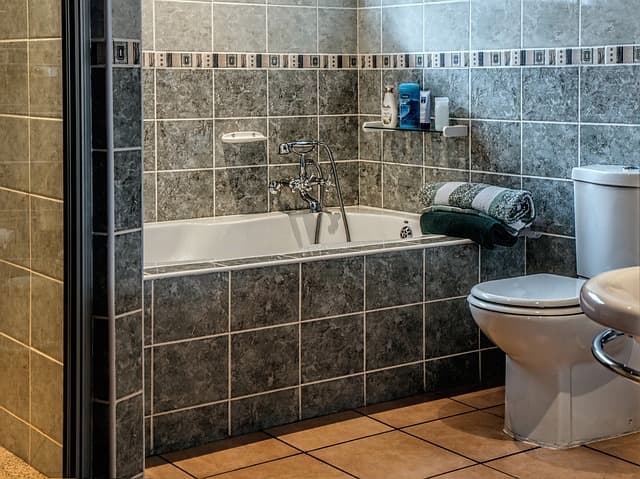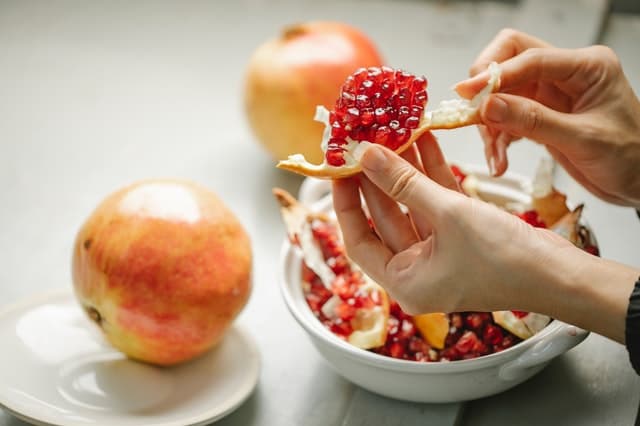
Before, artificial lighting was the product of a light bulb screwed into a socket, then came along neons, halogen bulbs, and spiral-shaped compact fluorescent lights (CFL). Nowadays, the price-quality ratio and energy efficiency of light-emitting diodes (LED), make this type of lighting a must-have.
How do LED bulbs light up a space?

Source: Canva
Instead of creating a light halo, which is produced by incandescent technology, LED lights emit a concentrated light source that’s nearly uniform on all surface areas. Unlike compact fluorescent light bulbs, LED bulbs don’t generate any ultraviolet rays and, as a bonus, items don’t fade under this type of lighting.
Therefore, LED bulbs light up spaces evenly and prevent items from fading, as witnessed in Technicolour movies, like The Wizard of Oz (1939). However, you wouldn’t want the rooms in your house to resemble an aseptic laboratory, or worse, reminiscent of a commercial office space or your kids’ school.
Avoid installing LED lights in the middle of the room as you would with other lighting. Instead, install them in confined spaces. They’re tiny little bulbs, aligned on a strip or rod or recessed, so you really have to rethink your kitchen lighting. In a functional space like a kitchen, which typically has numerous nooks and crannies, you can choose between several different models. Recessed LED lights are perfect to light your countertops and other work surfaces, and they can be installed under or inside your cabinetry. Stick-like LED rod lights can run along surfaces, while flexible strips can fit smaller, confined spaces, tracking along corners and arches.
You can use LED bulbs in chandeliers, pendants, semi-flush ceiling lights, flush-mount lighting, sconces, outdoor lamps, indoor and outdoor recessed lights, and landscaping lights.
According to CAA Quebec, some dimmer switches designed for traditional lighting are compatible with LED lamps. However, check whether the LED lamp is fit for a dimmer-controlled circuit before screwing on the bulb. If the light flickers or changes brightness, switch to a universal dimmer.
What colour is LED light?
Source: Canva
You can opt for Natural White since LED lights are available in every shade of white on the Kelvin scale. At 4500K, Natural White lands between Warm White, which is orange-tinted at roughly 3000K, and Cold White, which is blue-tinted between 5000K and 6000K. Warm White is easier on the eyes, softens complexions and skin imperfections. Its use is highly recommended in living rooms, dining rooms, and bedrooms. On the other hand, Cold White conveys a better representation of colours since it’s a bit brighter. Its use is recommended in kitchens, garages, and workshops.
Dare I, you say? LED lights are available in all colours of the spectrum! There are even colour-changing, self-adhesive light strips that are remote-controlled. It’s perfect for Christmas lights, too! This lighting option allows you to benefit from different light features, like rapid flash, strobe, and progressive dimmer. Installed in your basement, combined with a decent sound system, you’ll have a club-like ambience in no time!
Your teenagers will have a blast with it. Since they're old enough to drive, this nightclub setting will be reason enough to avoid borrowing your car. Why party elsewhere else when you have a club-like setting in the basement?
Vintage Filament LED Light Bulbs: Eureka!

Source: Canva
Nightclubs, mini-bars, and basement parties are fun, but they’re not everyone’s cup of tea. For jazz scene lovers to Tron fans—the 1982 science fiction movie—the vintage LED bulb is perfect. It’s very reminiscent of the incandescent filament bulbs that Thomas Edison modelled in glass globes in the early part of the twentieth century. Sphere-like, cylindrical, and oval: nowadays, glass globes come in various sizes and shapes for a smart aesthetic!
This light bulb was invented in 2008 and allows for good light distribution, which is evenly cast, and interference-free. It’s been a very popular choice of light bulb in Europe since 2012, and these consume 10 times less energy and last 300 times longer than the incandescent bulb. They’re 20% more expensive than standard LED bulbs but are 40% more effective, which means they’re between $3 to $20 a piece, depending on the model.
The not-for-profit organization Ecohome issued a warning about purchasing cheap bulbs online—make sure they have a basic UL certification.
Are LED light bulbs energy efficient?
According to Hydro-Québec, compared to compact fluorescent light bulbs, the LED bulb lasts 15 times longer and consumes 10% less energy. The bulb’s efficiency is measured in lumens per watt, so lumens indicate the quantity of light emitted by the bulb and the wattage details its power consumption. In other words, when you purchase a bulb, go for low wattage for a higher lumen count. Another proof of the bulb's energy efficiency is having the Energy Star logo on its packaging.
While the compact fluorescent bulb costs $7 less, the LED light bulb costs $3 less in terms of energy consumption. By considering all these factors, on top of the number of light bulbs needed during daylight, choosing LED bulbs saves you 2 more dollars compared to a compact fluorescent bulb and 47 more dollars compared to an incandescent bulb. Moreover, fluorescent bulbs contain harmful mercury.
Want to learn more about eco-friendly home renovations? Check out our Eco-Friendly and Green Renovation Guide.
Get 3 quotes for your LED light installation project
RenoQuotes.com can help you get quotes for your LED light installation project. By submitting your project, we’ll put you in contact with top-rated contractors. Fill in the form on the homepage (it only takes a few minutes), and you will get estimates from trusted professionals.
Dial 1-844 828-1588 to speak with one of our customer service representatives.
Looking for something else?
Related articles
The latest industry news, interviews, technologies, and resources.

Amanda Harvey
•03 Nov 2025
Tiles come in all kinds of colours, shapes and sizes, keeping bathroom floors waterproof and beautiful. However, like any home surface, they need proper maintenance to uphold their elegance while preventing cracking, mould or mildew growth.

Editorial Team
•01 Oct 2024
A common misconception is that it is best to plan home renovations in the summer, rather than during other parts of the year. Although certain tasks, such as paving an entrance or inspecting a roof, require conditions that are specific to the warmer season, in many cases, renovating during the winter can prove to be a good option.

Editorial Team
•17 Jan 2025
Has your son or daughter grown up a lot and their childhood bedroom isn’t cutting it anymore? Well then, it’s about time to redecorate their slice of heaven to revamp their bedroom according to their personality and the young adult they’re quickly becoming. Here are some ideas to serve as inspiration for your teenager’s future bedroom design project!

Editorial Team
•07 Nov 2023
Garbage disposals were invented in America in the late 1920s, but it was only during the postwar years that there was a growth in the installation of this device in the private homes of North Americans.

Editorial Team
•07 Nov 2023
We previously touched on the wonderful world of recessed lighting, but what areas of your home can benefit the most from such a great lighting style? Kitchens are becoming the focal point of a home, acting as a hub of sorts.